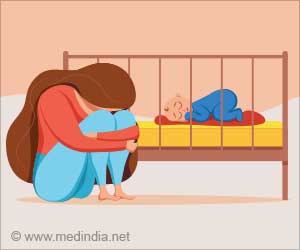20 per cent of women aged over 30 and half of women over 60 were affected by some degree of female pattern hair loss, Australian researchers say.
It is not as if trying to comb over or seeking to cover up the patch with something or other is not a preoccupation of balding men alone, it looks like.
Up to 20 per cent of women aged over 30 and half of women over 60 are affected by some degree of female pattern hair loss, Australian researchers note.Of course in men, 30 per cent of those aged over 30 and half of those over 50 are affected.
While men commonly develop receding hairlines and bald patches on the crown, women tend to thin diffusely over the front and top of the head.
Dr Francesca Collins, lecturer in behavioural studies in Monash University, said female pattern hair loss, or androgenetic alopecia, had a devastating impact on many sufferers.
"The psychological effect can be really profound," she said.
"We've worked with women who cover the mirrors in their house.
Advertisement
"If they're walking down the street with a group of friends, they'll stand at the back of the group so people aren't looking at their head.
Advertisement
"There are quite elaborate rituals which go around concealing the fact they are losing their hair."
Dr Collins, author of the book Bad Hair Day, said the problem was a "sort of secret women's business", despite affecting almost as many women as men.
She said, “We are not the least bit surprised if a bloke goes bald, not even if it's in their late teens."
"Whereas, historically, women have kept their hair long and it's been a symbol of health and fertility and beauty."
She said women were experts at hiding problems with their hair and making the most of what they did have.
"The amount of money we spend every year on gels, mousse, hair sprays and colours is testament to what we will do," Dr Collins said.
Research by her co-author, St Vincent's Hospital director of dermatology services Prof Rod Sinclair, found 2 per cent of women aged 45 had severe female pattern hair loss, but this jumped to 15 per cent in women aged 75.
Prof Sinclair said female pattern hair loss, which was caused by genetic and hormonal factors, was the most common type of hair loss in women, followed by temporary hair shedding after pregnancy, and patchy hair loss caused by the autoimmune disorder alopecia areata.
In autoimmune diseases, the body's immune system becomes misdirected, attacking the very organs it is designed to protect. For reasons we do not understand, about 75 percent of autoimmune diseases occur in women, most frequently during the childbearing years.
Sinclair said temporary hair loss could also be triggered by severe illness and some medications.
Dr Collins noted daily hair loss was completely normal. Some people lose as few as 50 hairs a day, but others up to 300 hairs a day.
She said women with pattern hair loss normally noticed a sharp increase in daily hair loss.
And like men, different women reacted differently.
"Some people will go quite thin and they'll be cool about it, and some people will lose a little bit and they'll be freaking out," Dr Collins said.
She said consulting a dermatologist should be the first step for a woman concerned about hair loss.
Dr Collins said that while lost hair could not be regrown, the condition's progress could be slowed with medication.
She said there were also a number of products aimed at helping mask hair loss, including hair fibre sprays, which shaded in thin areas to give a fuller look.
Dr Collins said hair transplants were not a great option for women because it was difficult to transplant individual strands close enough to replace the spread of lost natural hair.
"If you're a man with a completely bald crown, any hair is going to make a difference," she said.
"For women, because their hair loss is a diffusion of their hair across the top of their head, the technology isn't good enough to get hairs close enough together to really make a difference."
Prof Sinclair said it could also be difficult to get sufficient donor hairs for successful transplants in women.
Source-Medindia
GPL/B











